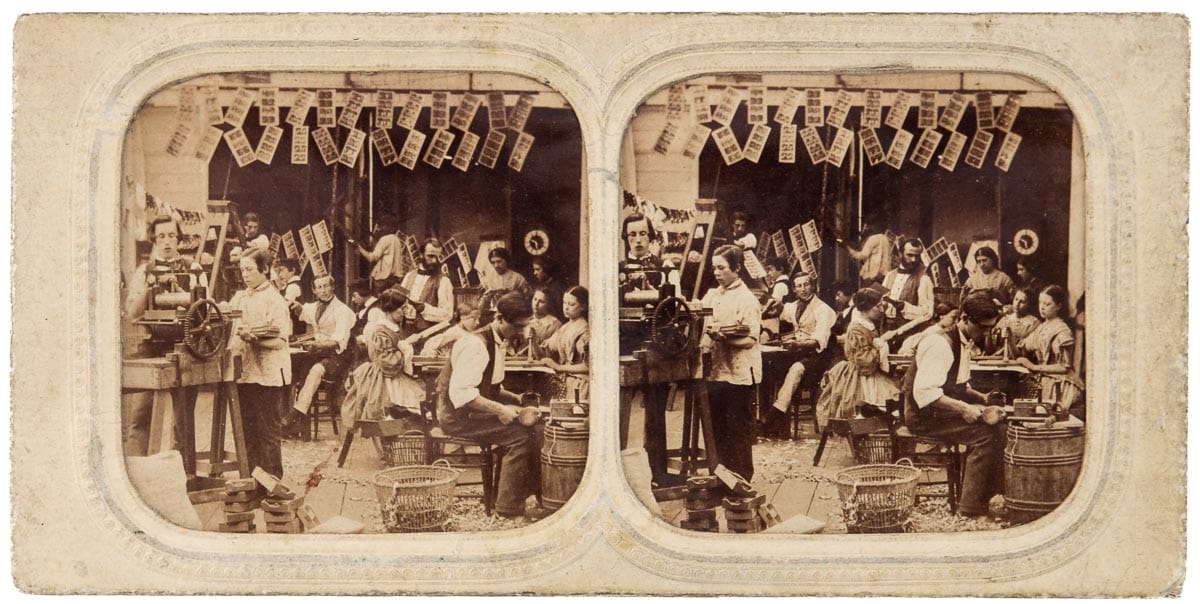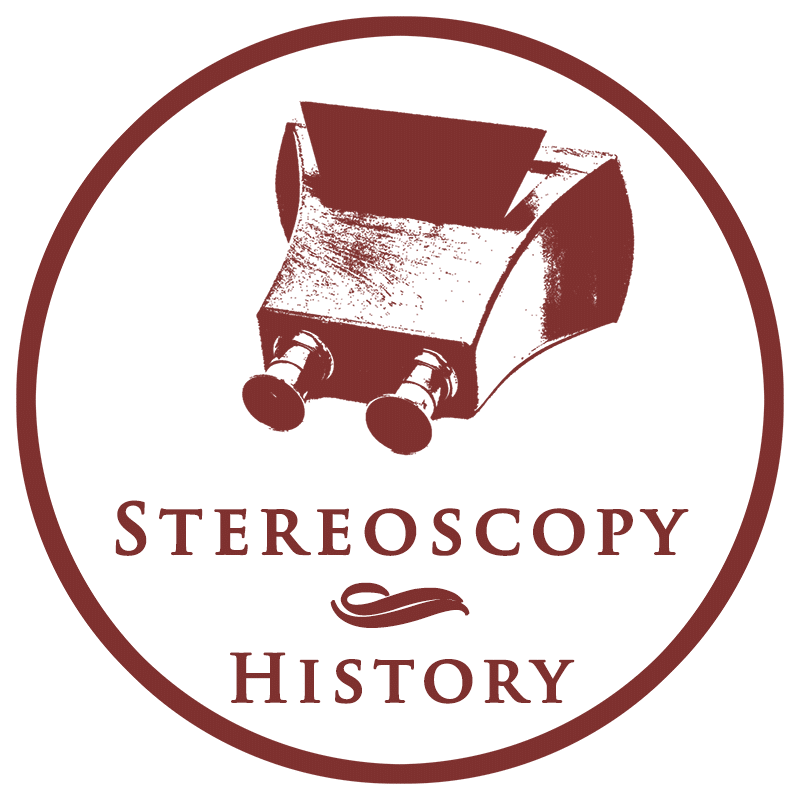
A stereoview of a workshop where stereoviews were made! The back has the inscription Fabrication de cadres photographiques, 7e série no. 1 and the name A. Aubenas, Verny. According to Denis Pellerin, the stereoview was published by Alexis Gaudin in c.18601. The image shows a vivid picture of a workshop where prints were developed, dried and cut, before being glued in sheets. Four stereoviews are printed per sheet and the sheets hang to dry in the background. The image is clearly staged and shows a lot of stereo depth effect. It is very likely that the photo was made in Gaudin’s stereoview workshop.
The 8.5 x 17 cm stereoview is a paper transparency, better known as tissue stereoview or French tissue. The image is printed on a thin layer of paper, followed by the addition of coloured paint to the back. A thin layer of tissue paper is added to the back to hide the colours and diffuse the light. The two layers are sandwiched between a cardboard frame. With reflective light, a tissue stereoview looks like a normal image. When it is lit from behind, the added colours become visible.

Alexis Gaudin
Alexis Gaudin (1816–1894) was a pioneer in the field of stereoscopy and one of the drivers of the “Stereoscopomania” in the 1850s. He came from a family of five brothers, three of whom were engaged in photography. Gaudin established his first business in 1843. He made daguerreotype portraits and manufactured daguerreotype plates. Gaudin acquired the magazine La Lumiere in 1851. The magazine became one the most important photography publications in France until it stopped in 1867. From 1855, and together with his brother Charles, he ran the publishing company Alexis Gaudin et frère with branches in Paris and London. The catalogue of the publishing house contained 1,500 stereoview titles in 1856.
References
- Pellerin, D. (1995) La photographie stéréoscopique sous le second Empire, p. 98. ↩︎
